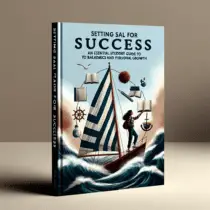Introduction
Studying in the United States is a dream for many international students. The USA offers top-notch education, diverse cultures, and countless opportunities for personal and professional growth. However, pursuing higher education in the USA can come with a hefty price tag. That’s where scholarships come in. Scholarships provide financial aid to international students, enabling them to pursue their educational goals without overwhelming financial burden.
In this article, we will explore various scholarships available for international students in the USA. Whether you’re an aspiring engineer or an aspiring artist, there are scholarships tailored to meet your specific needs and interests. Let’s dive into the world of scholarships and pave your path to success!
Types of Scholarships
1. Merit-Based Scholarships:
Merit-based scholarships are awarded to students based on their academic achievements, extracurricular activities, leadership skills, and other outstanding qualities. These scholarships recognize and reward students who have excelled in their academic endeavors. Popular merit-based scholarships for international students include Fulbright Scholarship Program, Hubert H. Humphrey Fellowship Program, and Rotary Foundation Global Grant Scholarships.
2. Need-Based Scholarships:
Need-based scholarships are designed to assist students who demonstrate financial need. These scholarships take into consideration factors such as family income, assets, and expenses when determining eligibility. The Davis-Putter Scholarship Fund and Aga Khan Foundation International Scholarship Program are examples of need-based scholarships available to international students.
3. Field-Specific Scholarships:
Field-specific scholarships are awarded to students pursuing degrees in specific fields of study. These scholarships aim to support and encourage students in areas that are crucial for societal development. For example, the Microsoft Scholarship Program is open to international students pursuing degrees in computer science or related fields, while the Rotary Peace Fellowship is available for those interested in peace and conflict resolution studies.
How to Find Scholarships
Now that you know about the different types of scholarships, it’s time to find the ones that best fit your needs. Here are some ways you can discover scholarships for international students:
1. University Websites:
Most universities have dedicated scholarship pages on their websites with information about various scholarships available for international students. Check out the websites of universities you’re interested in to explore the scholarship options they offer.
2. Government Scholarship Programs:
Many governments, both within the USA and abroad, offer scholarships specifically for international students. For example, the Fulbright Foreign Student Program is a highly prestigious scholarship sponsored by the U.S. Department of State.
3. Scholarship Search Engines:
There are several online platforms that act as search engines for scholarships. Websites like Fastweb, Scholarships.com, and International Scholarships provide comprehensive databases of scholarships available for international students.
Tips for Writing Scholarship Applications
A successful scholarship application requires careful planning and attention to detail. Here are some tips to help you craft a compelling scholarship application:
1. Start Early:
Don’t wait until the last minute to start your application. Begin researching and gathering required documents well in advance so that you have ample time to prepare a strong application.
2. Tailor Your Application:
Each scholarship has specific eligibility criteria and requirements. Customize your application to align with the scholarship you’re applying for, highlighting relevant experiences, achievements, and aspirations.
3. Showcase Your Impact:
Highlight the positive impact you have made in your community or field of study. Demonstrating your dedication and contribution can greatly enhance your chances of receiving a scholarship.
Frequently Asked Questions
Q: Can international students apply for scholarships in the USA?
A: Yes, many scholarships in the USA are open to international students. However, eligibility criteria may vary for each scholarship.
Q: Do I need a certain GPA to be eligible for scholarships?
A: Some scholarships have minimum GPA requirements, while others do not. It’s important to check the eligibility criteria of each scholarship you’re interested in.
Q: Can I apply for multiple scholarships at once?
A: Yes, you can apply for multiple scholarships simultaneously. Keep track of application deadlines and requirements to ensure timely submission.
In Conclusion
Scholarships pave the path to success for international students in the USA by providing financial assistance and recognizing their achievements. Through merit-based, need-based, and field-specific scholarships, aspiring students can turn their dreams into reality. With ample research and well-crafted applications, international students can increase their chances of securing scholarships that will propel them towards their educational goals. So why wait? Explore the world of scholarships and embark on an incredible journey towards your future!






